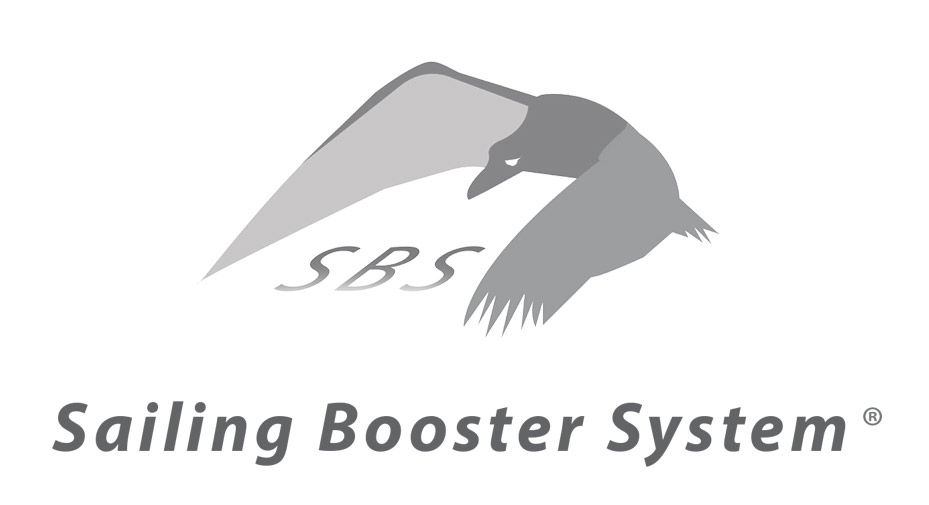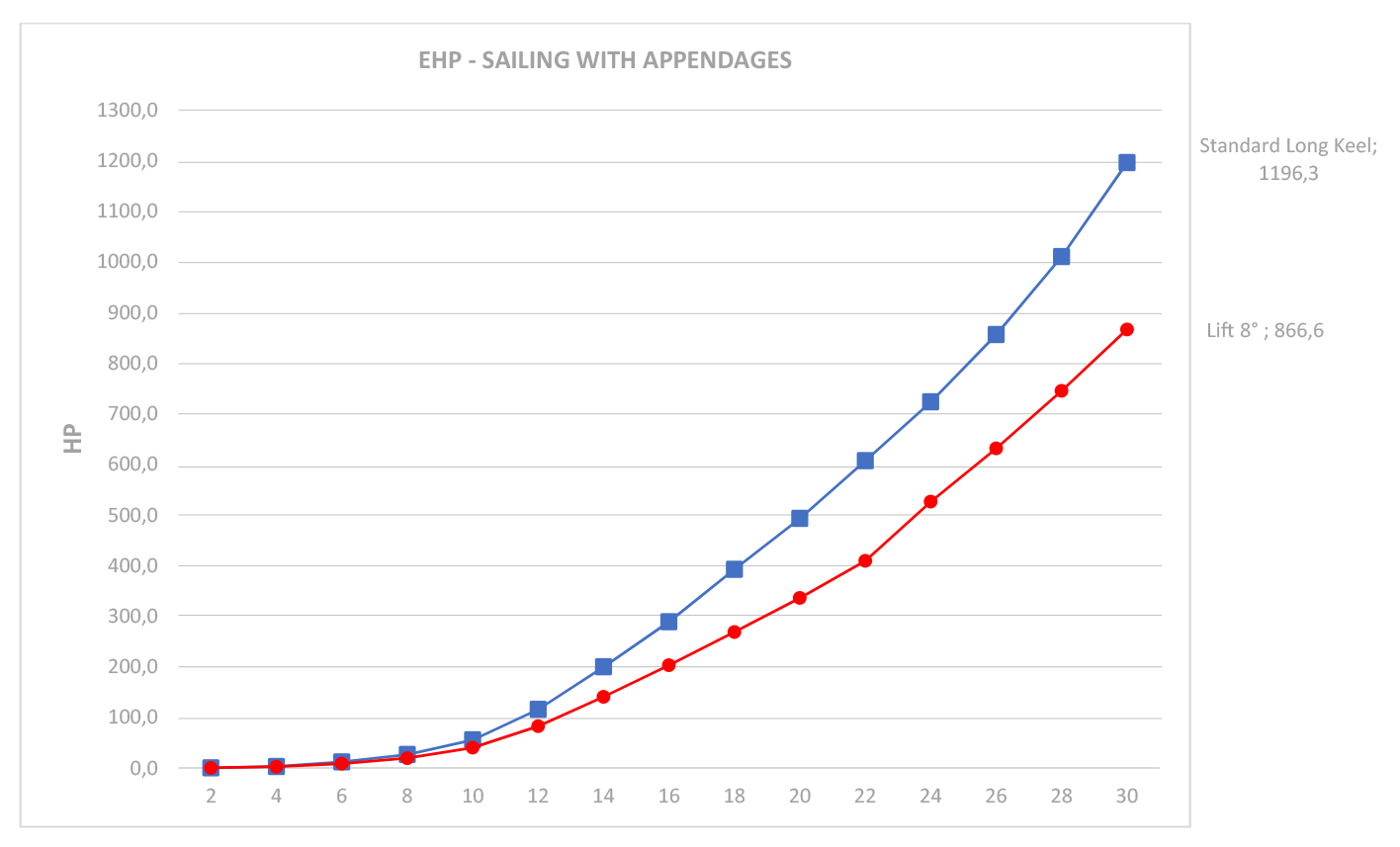New towing tank studies
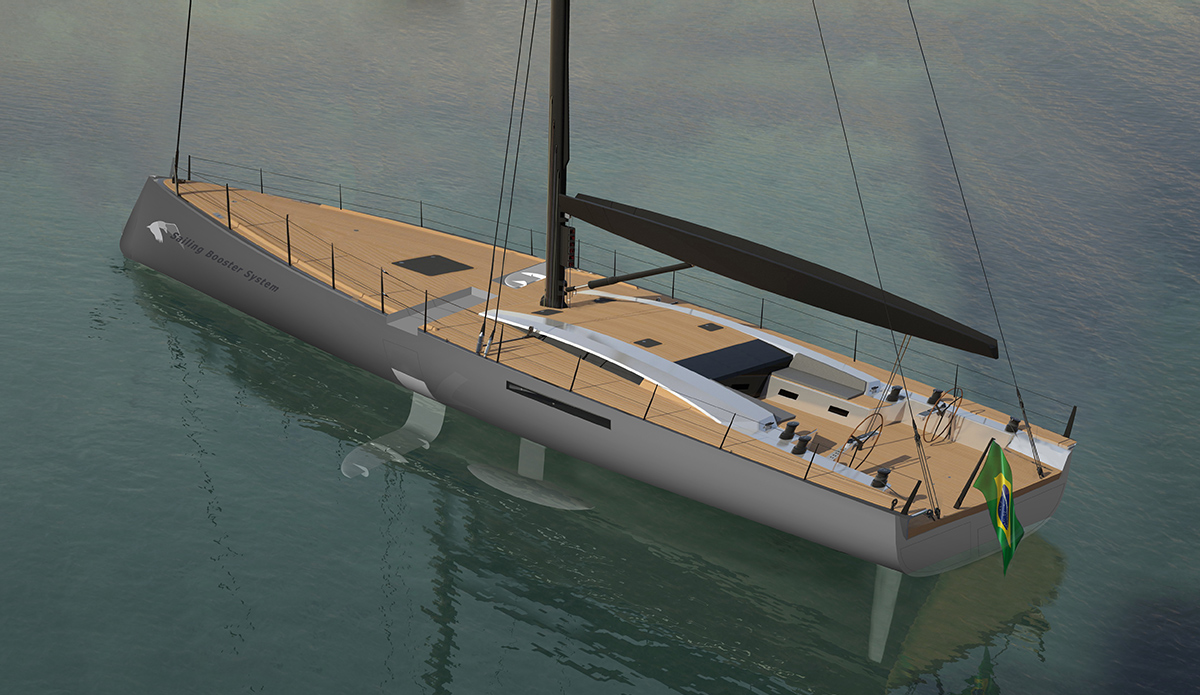
The analysis by mathematical models of the SBS system showed significant results in the gain vessels performance. These were analyzed for stability and hydrodynamic resistance, focusing on the comparison between a standard long-keel sailboat and its respective ballast, and a sailboat with SBS system installed, allowing keel and ballast reduction. To validate the obtained results in numerical modeling, a new stage of studies was developed, where the comparison between the two vessels was taken to towing tank of Jaú Technology College. The purpose this towing tank is to quantify the hydrodynamic performance of tested models and to evaluate the interactions of the vessel at the water - air interface.
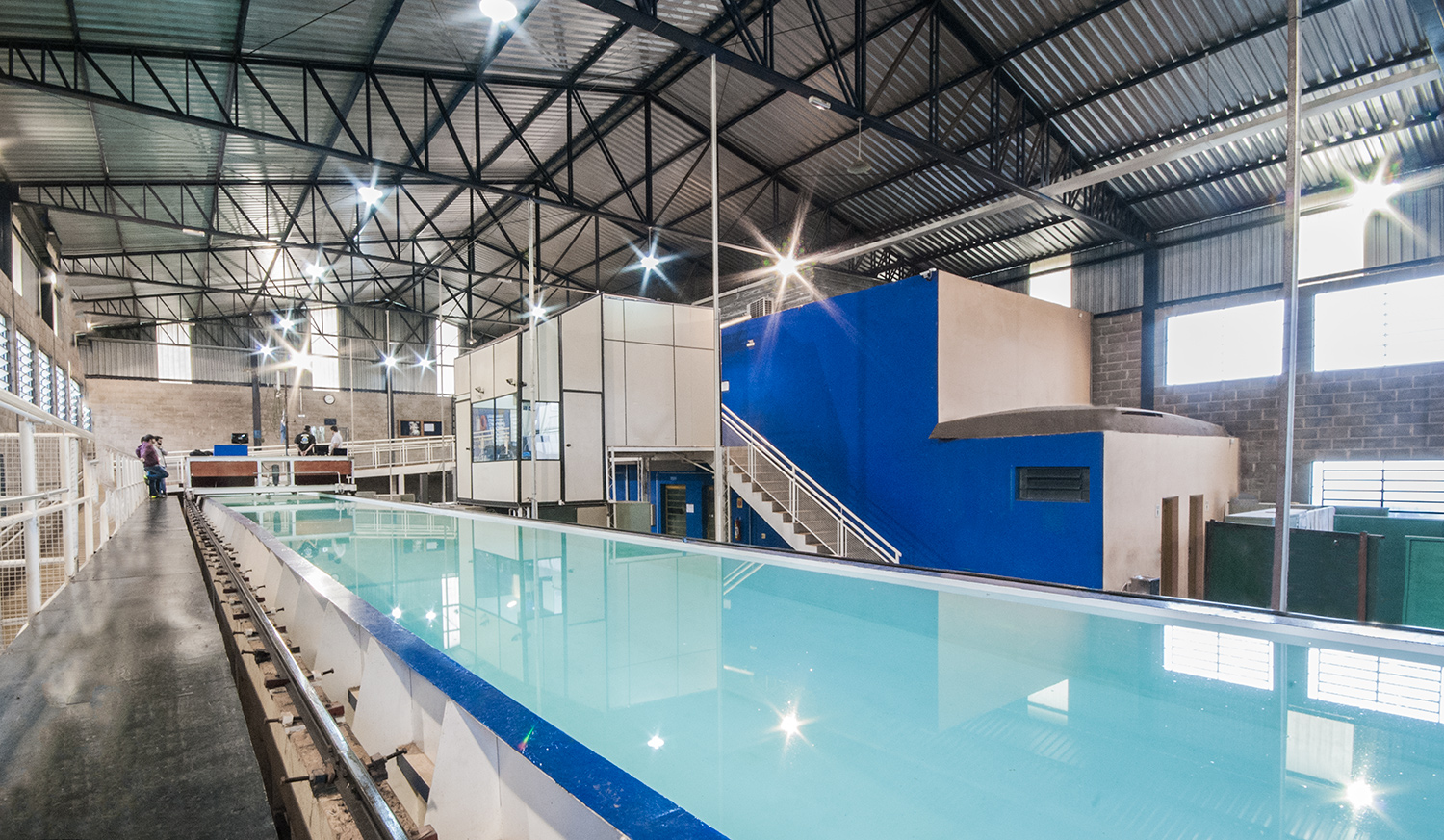
Tank Studies
For the tests in the towing tank, small scale models were developed, where the vessel and the wings of the SBS system were parameterized according to the Froude number. The scale models were prototyped in a 3D printer, guaranteeing maximum precision in the hulls and SBS system wings.
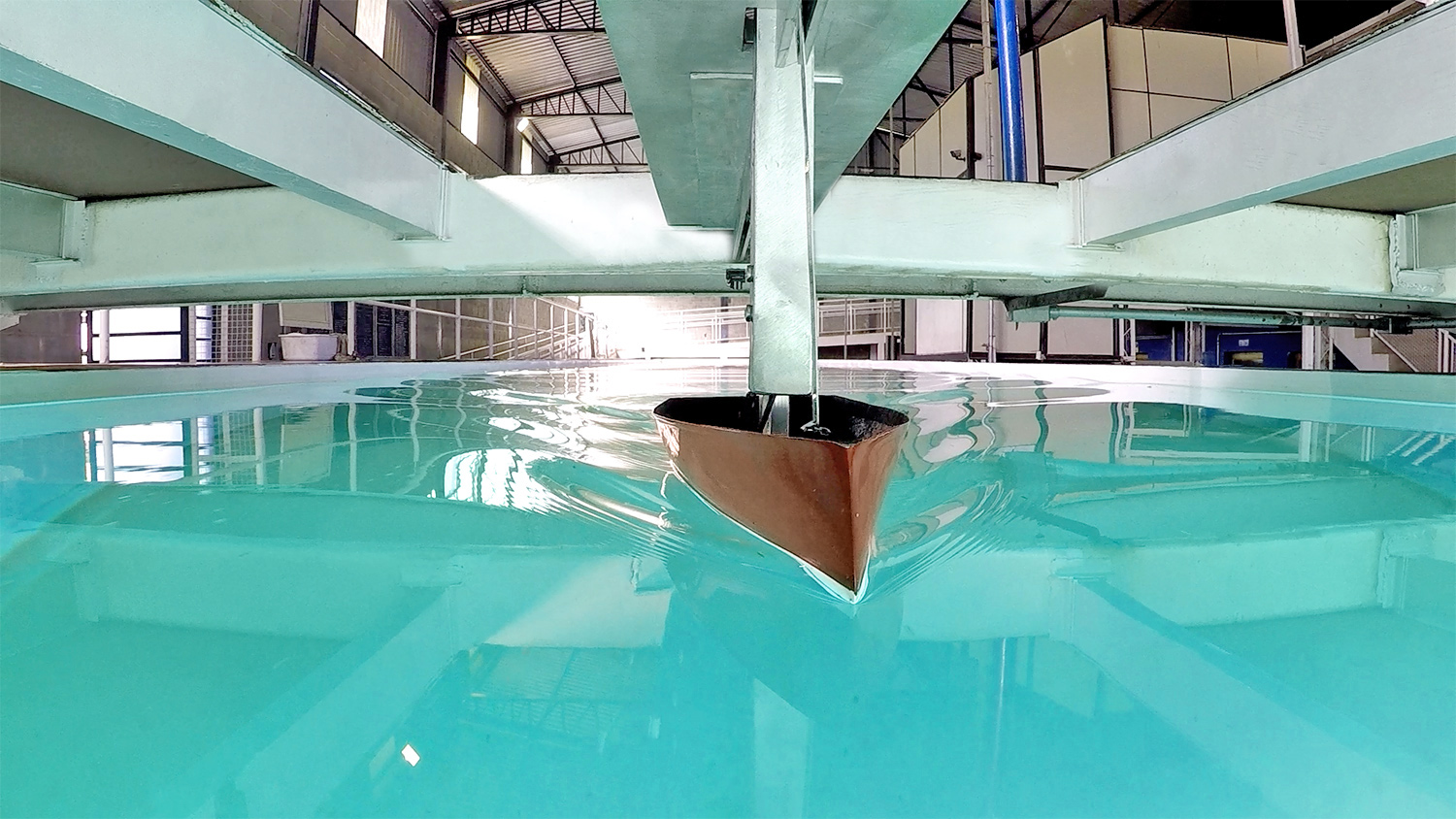
The tests sequence was developed by the SBS technical team in conjunction with the teachers responsible for the towing tank. The planning predicted the following tests for each analyzed condition:
• Longitudinal hull test;
• 7º heel test;
• 5° yawl test;
The longitudinal hull test aims to quantify the vessel hydrodynamic resistance values at certain speed, from which the effective horse power curves are plotted. The other tests were carried out to obtain hydrodynamic resistance data when the vessel is propulsion by sail. In this condition due to the forces resulting from the wind, keel and advancement the vessel acquires a leeward angle heel and a leeway angle close to 5 °. The SBS system use reduces these effects, keeping the vessel with less or no heel angle, according to wing adjustment, and less leeway, since the SBS system increases the lateral support forces. After calibration and adjustments to the data acquisition system, the races have started. The results obtained were analyzed according to International Towing Tank Conference (ITTC) recommendations, in which they were able to verify the differences found in the two models performance, where the vessel with SBS always took advantage of the standard long keel.
The final results obtained in the tests are shown below:
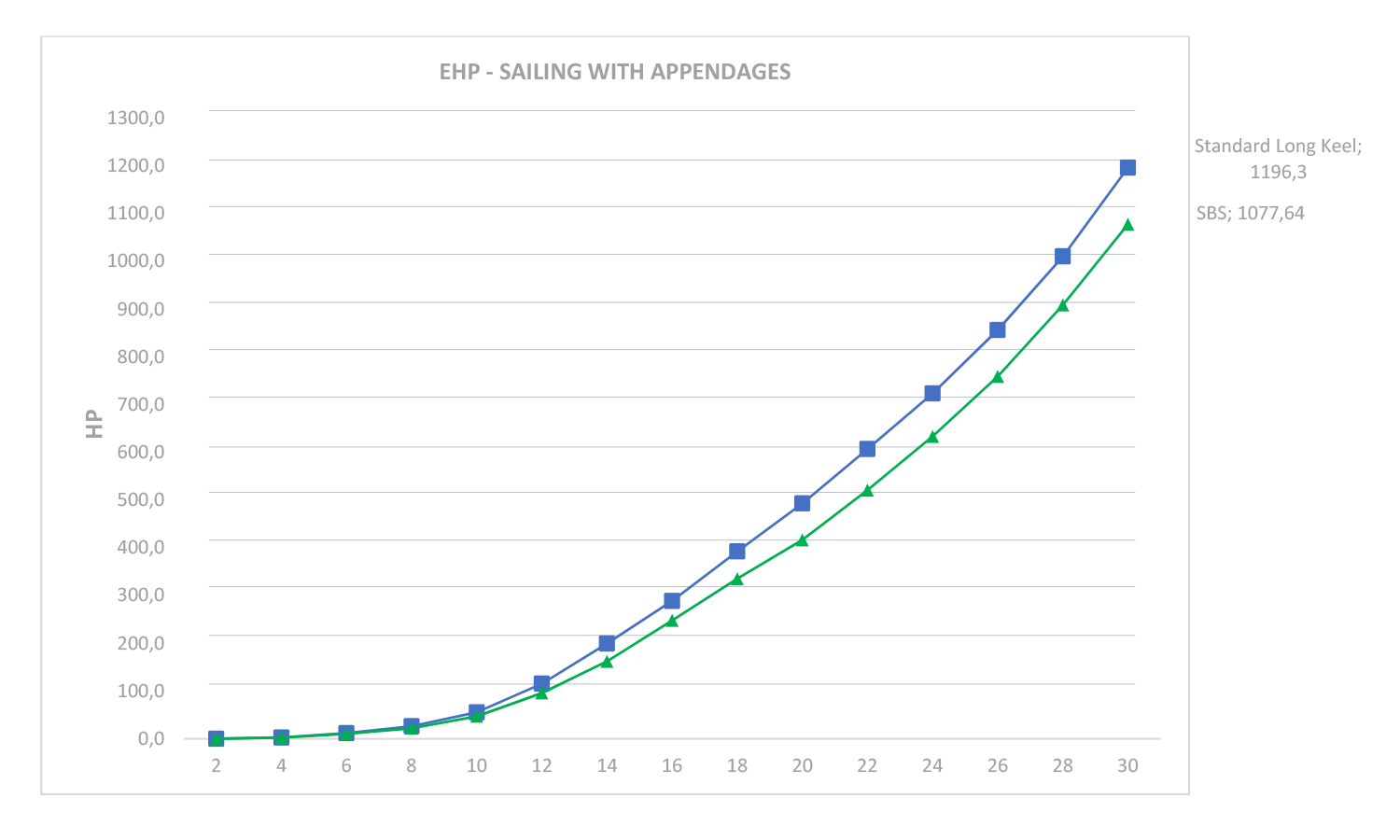
The comparison between the vessels shows that the draft reduction and consequent reduction of wet surface, thanks to SBS system presence, improved the hydrodynamic performance, for the same effective power. These results do not include the lift action generated by the SBS system wing, in other words, the comparison was performed considering only the ballast and keel reduction obtained by the presence of the SBS system.
The tests in the condition with heel angle 7° and 5°of yawl had very similar results to those obtained in the longitudinal hull test, indicating that the heel angle and yawl have a minimal influence on the hydrodynamic resistance.
Another important confirmation obtained in the tests was the validation of numerical modeling performed in the first studies, where the results obtained with towing tank were within the predicted in the mathematical model.
With this, SBS system performance could be projected in full operation, generating lift, improving hydrodynamic performance, increasing vessel stability and reducing leeway.
The following curves were designed using mathematical models based on the results obtained in the towing tank.
The "Lift 8 °" curve is for a system running with only one of the wings in the water with 8 ° attack angle. The results show that the performance gains are really expressive, allowing to achieve high speeds with lower power. In the following table it is possible to visualize the speed gain for the same wind condition.
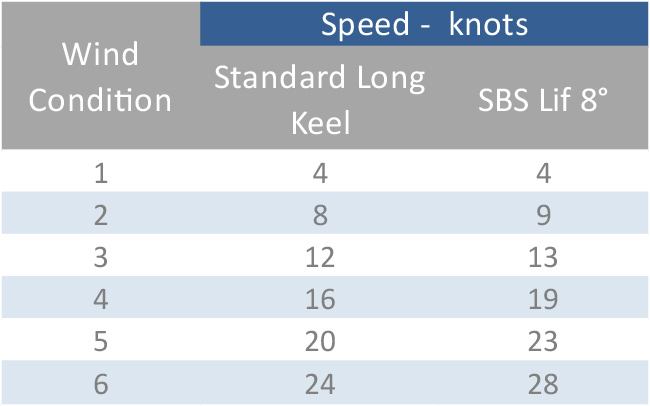
As the boat speed increases, so does the apparent wind speed. With this, the vessels will gain higher speeds, further increasing the performance of the vessel with the SBS system over the standard long keel.
One of the main differentials of the high performance SBS system can be explained by its minimal surface interference. In a simplified way, any wave or vorticity generated by the vessel can be understood as hydrodynamic efficiency loss. When developing a project it is always necessary to minimize losses in search of best performance.
The SBS system has been developed so that its interference on the sea surface is minimal and the forces acting have maximum efficiency. When in operation, the waves incidence and vorticides sighted on the surface should be almost nil, leaving only hull wave. In order to achieve maximum system performance, the SBS team carried out several studies and tests until obtaining the necessary parameters so that the wing lift has the minimum of interaction with the surface, always guaranteeing the best performance.
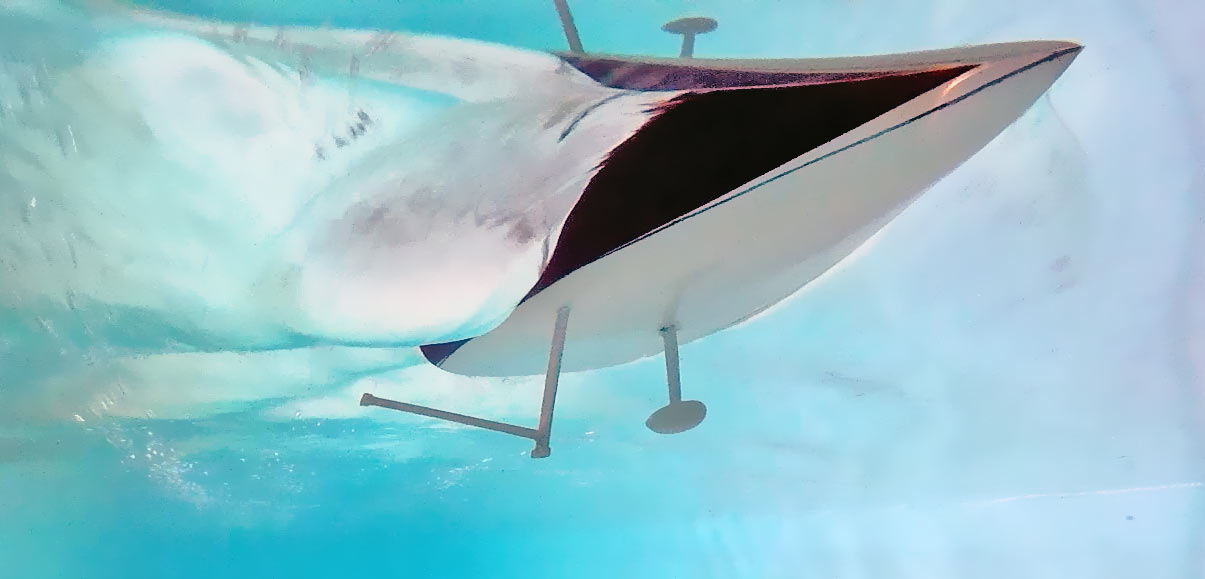
The results obtained with the towing tank demonstrate that the efficiency of the SBS system brings a new reality to the sailing world.
We would like to thank all support and dedication provided by towing tank teachers and interns of Jaú Technology College (FATEC), in special to MSc. Alex de Almeida Prado and MSc. Vladimir Cancian Junior that helped the SBS team to bring a new horizon and possibilities to the designers and sailors of the entire world.
CONTACT
sbs@sbssystem.com.br
COPYRIGHT ® 2017 - ALL RIGHTS RESERVED
